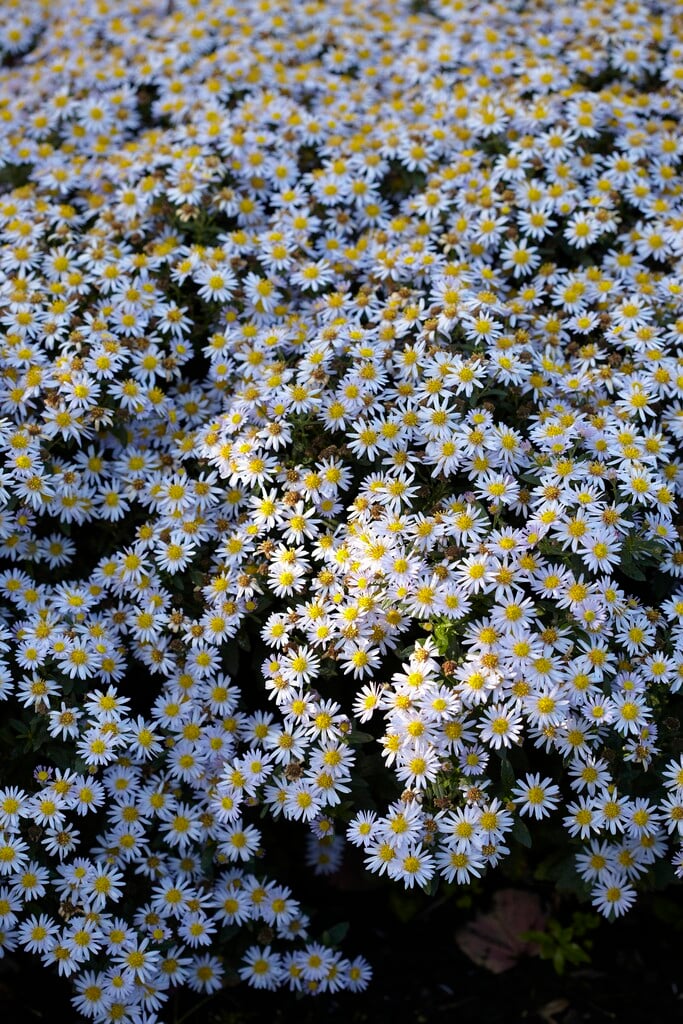Aster ageratoides 'Stardust'
Clump-forming perennial which grows to 60cm tall with dark green, toothed foliage, and clusters of pale lilac, starry flowers with yellow centres, produced over a long period in autumn
Size
Ultimate height
0.5–1 metresTime to ultimate height
2–5 yearsUltimate spread
0.5–1 metresGrowing conditions
Moisture
Moist but well–drained, Well–drainedpH
Alkaline, Neutral, AcidColour & scent
| Stem | Flower | Foliage | Fruit | |
| Spring | Green | |||
|---|---|---|---|---|
| Summer | Green | |||
| Autumn | Purple Yellow | Green | ||
| Winter |
Position
- Full sun
- Full shade
Aspect
South–facing or East–facing or West–facing
Exposure
Exposed or Sheltered Hardiness
H5Botanical details
- Family
- Asteraceae
- Native to GB / Ireland
- No
- Foliage
- Deciduous
- Habit
- Bushy
- Genus
Aster can be perennials, annuals or subshrubs, mostly with narrow leaves, and solitary or clustered, daisy-like flowers
- Name status
Accepted
How to grow
Cultivation
Grow in moderately fertile soil in full sun or partial shade. See aster cultivation
Propagation
Propagate by division in spring or root softwood basal cuttings in spring
Suggested planting locations and garden types
- Cottage and informal garden
- Flower borders and beds
Pruning
Cut stems close to the ground in late autumn after flowering
Pests
May be susceptible to leaf and bud eelworms, slugs and snails
Diseases
Asters may be susceptible to Verticillium wilt, Powdery mildews and grey moulds
Get involved
The Royal Horticultural Society is the UK’s leading gardening charity. We aim to enrich everyone’s life through plants, and make the UK a greener and more beautiful place.
